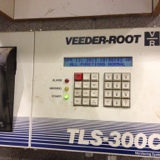Information
-
Audit Title
-
Client / Site
-
Facility ID Number
-
Location
-
Conducted on
-
Prepared by
-
Personnel
- George Ontko
- Pete Dahlgren
- Phil Grosse
UST Facility Inspection Form
Documentation
-
Is a Registration Certificate posted and current?
-
Expiration Date (as indicated in the body, NOT the upper corner).
-
Financial Responsibility current?
-
Expiration Date
-
To add comments related to Documentation, check here.
-
Comments
-
Add media
Dispenser Area
-
If there are NO DISPENSERS as part of this system check here.
-
If there are NO Dispenser SUMPS, check here.
-
Internal Piping/Components
-
Is any metal piping or braided metal flex in direct contact with soil or debris, without cathodic protection attached?
-
No leaks from any piping, filters, or other components of the system?
-
No abnormal appearance of piping or components (rust, discoloration, delamination, swelling, deterioration)?
-
Product Shear Valve (only required on pressure systems): Properly secured and anchored, installed at proper level, with no leaks?
-
Dispenser Sumps
-
Clean and empty: No water, product, or debris?
-
Sump Integrity: No cracks,bulges, or holes?
-
If double wall piping, is test boot pulled back so interstice is unobstructed?
-
Internal Piping/Components
-
If any dispenser does NOT have a sump, check here.
-
Is any metal piping or braided metal flex in direct contact with soil or debris, without cathodic protection attached?
-
No leaks from any piping, filters, or other components of the system?
-
No abnormal appearance of piping or components (rust, discoloration, delamination, swelling, deterioration)?
-
Product Shear Valve (only required on pressure systems): Properly secured and anchored, installed at proper level, with no leaks?
-
External Components
-
No damage to, or deterioration of hoses, filters, or nozzles?
-
Splash guards, breakaway devices present and in working order?
-
Signage (Warning, No Smoking, Fuel Identification) present and legible?
-
Miscellaneous Items
-
Is Emergency Shut-Off button present?
-
Fire Extinguisher within 100 feet?
-
Properly charged and inspected (annual inspection required)
-
Area surfaces free of granular absorbent?
-
No dispensers present as part of this system.
-
To add comments related to the Dispenser Area, check here.
-
Dispenser Area Comments
-
Add media
Leak Detection Methods/Equipment
-
If non-ATG Automatic Interstitial Monitoring Device, or if Automatic Interstitial Monitoring is included in function of ATG, check Sensor Status monthly. Inspect piping sumps quarterly, or whenever sensors are not normal. If Manual Interstitial Monitoring is leak detection method, or if there are no sensors in piping sumps, piping sumps should be inspected monthly.
-
Select method(s) of release detection
- ATG
- Non-ATG Automatic Interstitial Monitoring Device
- Manual Interstitial Monitoring
- Automatic Line Leak Detection (pressure systems only)
- Groundwater Monitoring
- Soil Vapor Monitoring
-
ATG (with/without Automatic Interstitial Monitoring)
-
Leak test pass (0.2 gph periodic or CSLD/SCALD)?
-
No current sensor alarms
-
Alarm history clear of alarms (past month)
-
Are tank interstitial sensors normal?
-
Are piping sump sensors normal?
-
Paper loaded (if applicable)
-
Automatic Interstitial Monitoring Device (non ATG)
-
Device operational, with no alarms on tank interstitial sensors, or piping sump sensors?
-
Manual Interstitial Monitoring (See Piping Containment Sumps item in Tank Area Section below).
-
Automatic Line Leak Detection
-
No leaks in the leak detector(s)?
-
Groundwater Monitoring
-
Cover(s) clearly marked and secured?
-
Water present in well(s)?
-
No product present in well(s)?
-
Soil Vapor Monitoring
-
Cover(s) clearly marked and secured?
-
To add comments related to Leak Detection Methods/Equipment, check here.
-
Leak Detection Methods/Equipment Comments
-
Add media
Tank Area
-
Overfill Protection
-
Select method(s) of Overfill Protection present. Overfill alarm is horn/strobe mounted somewhere in area of fuel fill. Automatic shut off device is mounted in fuel fill tube.
- Overfill Alarm
- Automatic Shut Off
- None Observed
-
Overfill Alarm
-
Are both audio and visual portions functional and within sight/hearing from fill port?
-
Signage present (alerting bulk fuel delivery person to overfill devices in use)
-
Automatic Shut Off Device
-
Signage present (alerting bulk fuel delivery person to overfill devices in use)
-
No Overfill Protection observed
-
Spill Containment Sumps (Spill Buckets)
-
Cover is in good condition and properly identified.
-
Sump clean, empty, dry, and in good condition.
-
Piping and components are in good condition, and cap seals tightly.
-
Is coaxial vapor recovery present on fuel fill pipe?
-
Piping Containment Sumps (Check here if present) If Automatic Interstitial Monitoring, inspect only quarterly, unless sensor(s) in alarm.
-
Piping Containment Sumps
-
Cover is in good condition.
-
Secondary cover is in good condition and seals to sump.
-
Sump is clean, empty, dry, and in good condition.
-
Sump sensors present, at correct position/height, and operational.
-
If braided metal flex is present, there are no leaks and it is not in contact with soil or debris.
-
Venting Equipment
-
Pressure/Vacuum vent cap present
-
Dual Point, Stage I Vapor Recovery ports (Check here if present).
-
Vapor Recovery (Dual Point- Stage I)
-
Cover in good condition and properly identified.
-
Sump (if present) is empty, dry, and in good condition.
-
Poppet cap is tightly sealed.
-
Poppet seals tightly and moves freely when depressed.
-
To add comments related to the Tank Area, check here.
-
Tank Area Comments
-
Add media
Corrosion Protection (if required)
-
Impressed Current Cathodic Protection (Check here if installed).
-
No Impressed Current device.
-
Rectifier is operating within normal limits.
Miscellaneous Items
-
Spill Kits: Appropriate and sufficient materials present?
-
To add Comments, check here.
-
Comments
-
Add media
-
To add a sketch, check here.
-
Sketches
Sketch
-
Sketch
Certification
-
Signature






